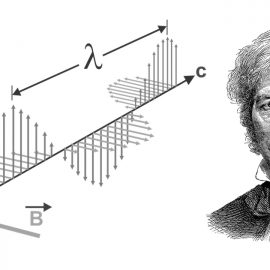

This article is an excerpt from the Shortform book guide to "How the World Really Works" by Vaclav Smil. Shortform has the world's best summaries and analyses of books you should be reading.
Like this article? Sign up for a free trial here.
When did we become dependent on fossil fuels? What did we use before that?
Vaclav Smil explains that, for millennia, the only energy sources humans relied on (besides their own labor) were fire and animals. It wasn’t until the 1900s that we began using large amounts of coal and the mid-20th century when we began relying heavily on other fossil fuels.
Continue reading for a brief history of energy use.
The History of Energy Use
The modern history of energy use is one of ever-increasing reliance on fossil fuels. We’ll explore that after a quick look at what we used before fossil fuels dominated the scene.
Fire and Muscle
Humans’ earliest source of energy was fire. Then, after the development of agriculture, domesticated animals were used for transportation, agricultural work, and lifting or carrying heavy loads. Much later, humans developed sails, waterwheels, and windmills. But even as late as the 1500s in societies that used these more modern forms of mechanical energy, the vast bulk of energy was still supplied by human and animal labor and by burning wood.
(Shortform note: As the world’s population grew and became more urban, our reliance on fire to provide heat and light began to cause problems. For example, in England in the 16th and 17th centuries, wood became scarce. By this time, it was being used not only as fuel but also as a building material for rapidly-ballooning cities like London. As a result, England’s forests began to disappear.)
Fossil Fuels
In the 1600s, England began using coal for fuel, rather than wood. The world was slow to adopt coal as an energy source, but by 1900, coal and crude oil were providing about half of the world’s energy. In the late 1800s, new forms of mechanical energy were also developed, from water and steam turbines to gasoline-fueled combustion engines.
Commercial crude oil was first extracted in the 1850s in Russia, Canada, and the US, and was used mostly to produce kerosene. After the development of the combustion engine, it was refined to produce gasoline and diesel fuel. But crude oil didn’t become the world’s primary source of energy until giant oil fields were discovered in the Middle East and the USSR in the 1940s and 1950s.
(Shortform note: Fossil fuels are fuels formed from the fossilized remains of plants and animals that lived millions of years ago. Layers of sand and rock covered over decomposing carbon-based organisms, subjecting them to immense pressure and heat, which converted them into crude oil (liquid at room temperature), coal (solid), and natural gas (gaseous). Fossil fuels can be extracted from the earth and further refined to create gasoline, diesel fuel, and heating oil; they can also be used as the basis for making plastics and many other products.)
Before WWII, the US and Canada were the only countries where many people owned cars. Mass car ownership expanded to Japan and Europe after the war. The post-war period also saw an increase in foreign travel and the use of fossil fuels in making plastics.
Fossil fuels supplied nearly 75% of energy by 1950. In the 50s, 60s, and early 70s, crude oil was so plentiful and inexpensive that there was no incentive to use it efficiently. Cheap oil was an important driver of the rapid economic expansion that took place during this time. But due to a combination of factors that included OPEC’s increase in size and power and the nationalization of various Middle Eastern oil fields, between 1973 and 1975 the price of oil rose precipitously—and the global economic growth rate dropped by 90%.
(Shortform note: OPEC, or the Organization of Petroleum Exporting Countries, is a multinational organization that was established in 1960 and meets twice a year to coordinate policies on oil prices and production. Collectively, OPEC’s members control about four-fifths of the world’s proven petroleum reserves.)
By the year 2000, only people at the bottom rung of the economic ladder (about 10% of humanity) depended on burning plant fuels, like wood and straw, for their energy.
We now use so much fossil fuel that, translated into physical labor, it’s as if every human on earth had 60 people working for them 24 hours a day, seven days a week (and for residents of wealthy countries, this number would be closer to 200).
(Shortform note: As Smil suggests, fossil fuel consumption per capita varies greatly by country. Seven small, fossil-fuel-producing countries, including Qatar and the United Arab Emirates, consume the highest amount of fossil fuel per capita per year (10 or more tons per person). They’re followed by Canada and the US, whose residents consume about 6.8 tons of fossil fuel per person per year. The rest of the world consumes significantly less per person.)

———End of Preview———
Like what you just read? Read the rest of the world's best book summary and analysis of Vaclav Smil's "How the World Really Works" at Shortform.
Here's what you'll find in our full How the World Really Works summary:
- How modern-day life relies heavily on fossil fuels for nearly everything
- Why liberals and conservatives need to better understand how the world works
- Why it's nearly impossible to meet current IPCC limits on global warming






